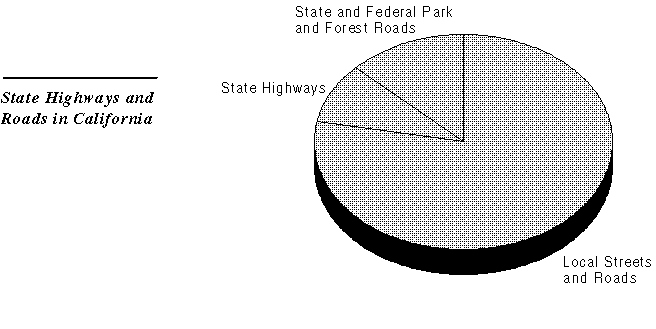
 Legislative Analyst's Office
Legislative Analyst's Office
The state highway system, which consists of roads under state jurisdiction, comprises only 9 percent of all roads in the state. Most of the public roads in California (78 percent) are under the jurisdiction of local governments.

The vast majority of California's highway system was constructed before 1966, as shown below.
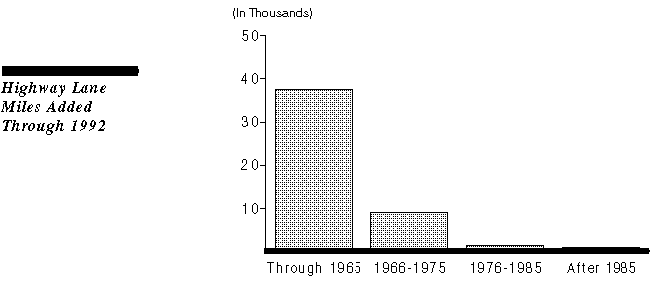
While few new miles of state highways have been constructed since 1970, traffic as measured in vehicle miles traveled has been steadily increasing. Where excess highway capacity exists, or where traffic flow is efficiently managed (for example, with synchronized traffic signals, ramp metering, etc.) congestion need not result. Otherwise, traffic growth results in congestion zones.
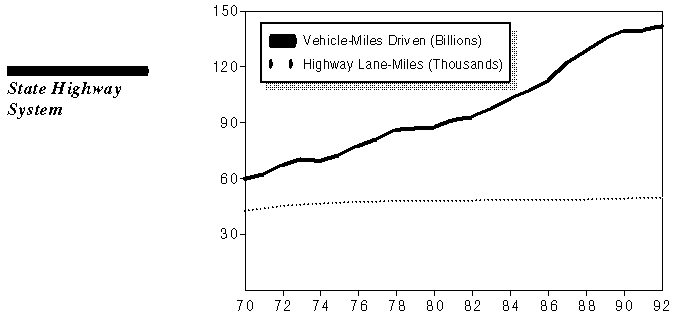
The state highway system includes both urban and rural highways and also includes roads of varying design standards--from high speed multi-lane freeways to two-lane rural roads and some urban streets. Traffic levels on state highways vary widely depending on location and design standards.
As the figure illustrates, the rural portion of the state highway system has over 30,000 lane-miles of roads, but most of these are nonfreeway roads (lower-speed roads, often with traffic lights or stop signs). In contrast, the urban highway system is only about 18,000 lane- miles, but most of these miles are high-speed freeways. Traffic volumes, measured in vehicle miles traveled, are much higher on the urban system, in spite of its smaller size; the highest traffic volumes are found on urban freeways.
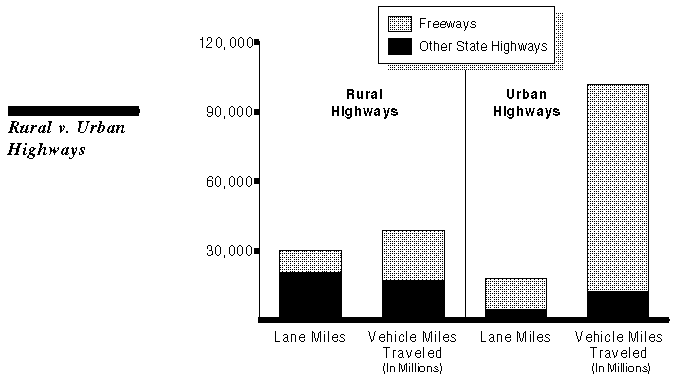
Caltrans' surveys of traffic congestion on urban highways show that highway congestion in the Los Angeles area is much more prevalent, and has grown more rapidly, than in the San Francisco Bay Area. However, congestion in the Bay Area is actually somewhat greater than shown in the survey (and the figure), because the survey excludes congestion due to freeway damage sustained in the 1989 Loma Prieta earthquake. Elsewhere in the state, congestion is a less prevalent, but rapidly growing, problem. Most of the congestion growth in the "remainder of state" category is in San Diego County.
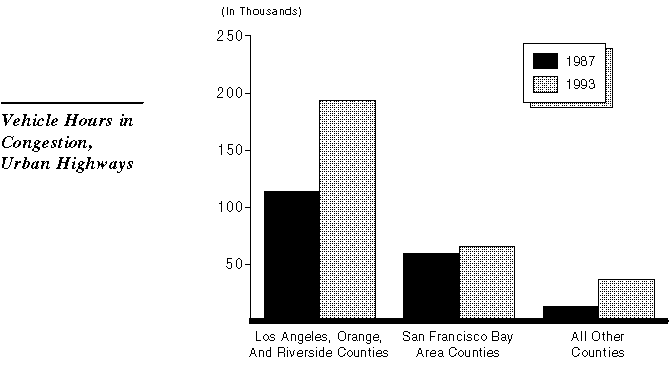
It is common wisdom that Californians are infatuated with their automobiles. However, by many measures, Californians are in fact less attached to their automobiles than are Americans overall. For example, Californians own fewer vehicles per capita than other Americans, are less likely to have a driver license, and drive fewer miles per person. Californians are above average only in measures of how intensively they use existing roads (miles driven per road mile; proportion of major urban highways that are congested). From this perspective, Californians, as individuals, are not obsessed with driving. However, the fact that there are so many Californians, and that the transportation infrastructure has not grown with population, means that the existing transportation system will be intensively used.
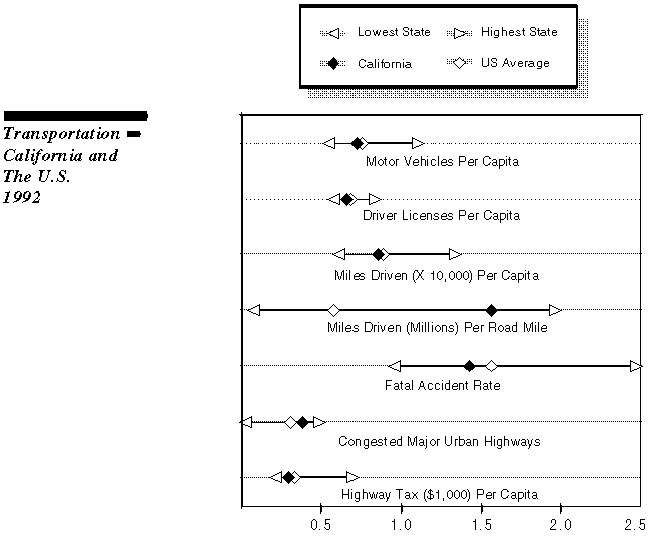
In 1993-94, the Department of Transportation (Caltrans) expended $4.5 billion on the state's highway program. This program alone accounts for over 90 percent of the department's total budget. The largest share of highway program expenditures was for construction of capital outlay projects, including seismic retrofit and earthquake repair; the second largest expenditure was for the design of these projects (capital outlay support).
The highway maintenance program seeks to protect the state's highway investment by guarding against physical deterioration of highway facilities and by keeping roads safe and clean. Expenditures in each category of highway maintenance fluctuate from year to year depending upon needs and priorities; pavement maintenance expenditures in 1993-94, for example, were $109 million.
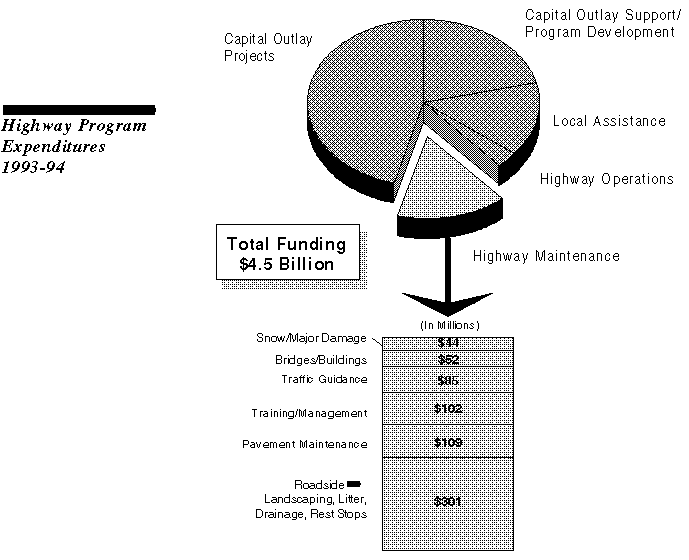
Retrofit of state highway bridges to earthquake safety standards is proceeding in two phases. Phase 1 was begun following the Loma Prieta earthquake (1989) and consists of 1,039 bridges. Phase 2 was initiated following the Northridge earthquake (1994), when Caltrans learned that many more bridges were at risk than previously known.

Los Angeles County has 638 bridges in the seismic retrofit program, the greatest number of any single county. The second largest number of bridges are in San Diego County (257). Of counties outside of southern California, Alameda has the greatest number of bridges in the seismic retrofit program (179).
